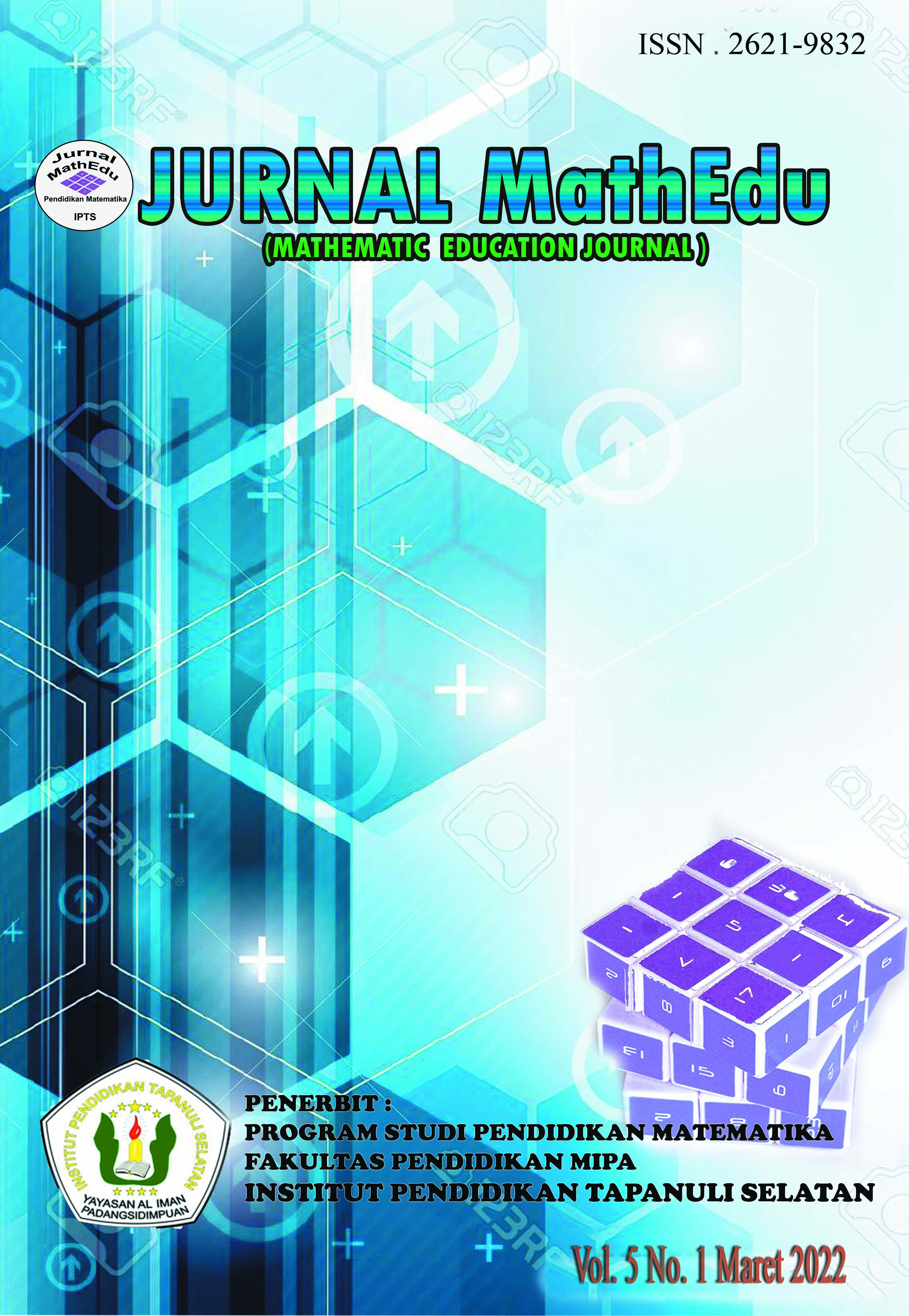DESKRIPSI KEMAMPUAN PEMAHAMAN KONSEP MATEMATIS DITINJAU DARI GAYA BELAJAR SISWA
Main Article Content
Abstract
This research is a descriptive qualitative research that aims to describe students' mathematical conceptual understanding in terms of visual, auditory, and kinesthetic learning styles. The subjects of this study were 3 seventh grade students at MTS Guppi Rannaloe Kab. Gowa, each of which represents: visual, auditory, and kinesthetic learning styles. The data in this study were obtained using research instruments, namely (1) the researcher himself; (2) learning style questionnaire; (3) concept understanding ability test; and (4) interview guidelines. The data analysis technique used is qualitative data analysis techniques, including: (1) data condensation, (2) data presentation, and (3) drawing conclusions and verification. From the results of this study it can be concluded that; (1) students with visual learning styles are able to fulfill 2 indicators, namely giving examples and non-examples of concepts, and expressing concepts in various forms of mathematical representation; (2) students with auditory learning style do not meet any of the indicators; (3) students with kinesthetic learning styles are able to fulfill 2 indicators, namely giving examples and non-examples of concepts, and expressing concepts in the form of mathematical representations.
Article Details
Authors who publish with this journal retain copyright to their articles. However, they grant the journal the right of first publication with the work simultaneously licensed under a Creative Commons Attribution License that allows others to share the work with an acknowledgment of the work's authorship and initial publication in this journal.
References
Deporter, dkk. (2015). Quantum Teaching. Bandung: Kaifa PT Mizan Pustaka.
Dimyati, Mudjiono. (2006). Belajar dan Pembelajaran. Jakarta: Bumi Askara.
Hamalik, Oemar. (2009). Psikologi Belajar dan Mengajar. Jakarta: PT. Bumi Aksara.
Herawati, O. D. P., Siroj, R. A., & Basir, M. D. (2010). Pengaruh pembelajaran problem posing terhadap kemampuan pemahaman konsep matematika siswa kelas xi ipa sma negeri 6 palembang. Jurnal Pendidikan Matematika, 4(1), 70-80.
Jihad, Haris. (2010). Evaluasi Pembelajaran. Yogyakarta: Multi Pressindo.
Lia Dwi Riyani. (2019). Analisis kesulitan belajar matematika materi konsep dasar himpunan dari kemampuan pemahaman konseptual matematis yang ditinjau dari gaya belajar siswa kelas VIII E SMP N 1 Purwojati (https://scholar.google.co.id).
Marfu`ah, Z. (2016). Hubungan Gaya Belajar visual, Auditorial, Kinestik, dengan hasil belajar matematika. Surakarta. Skripsi tidak Diterbitkan.
Miles, Mattew, B, A. Michael Huberman dan Johnny Saldan
a. (2014). Qualitative Data Analysis. A Methods Sourcebook Edisi Ketiga. Sage Publications: Inc.
Santoso, Soegeng. (2000). Problematika Pendidikan dan Cara Pemecahannya. Jakarta: Kreasi Pena Gading.
Slameto. (2003). Belajar dan Fakto-faktor yang Mempengaruhinya. Jakarta: Rineka Cipta.
Suntiko, M. Sobry. (2013). Belajar dan Pembelajaran: Upaya Kreatif dalam Mewujudkan Pembalajaran yang Berhasil. Lombok: Holistica.
Suyono, Hariyanto, (2012). Belajar dan Pembelajaran. Bandung: PT Remaja Rosdakarya Offset.
Usman, M.R. (2021). Analisis Kemampuan Komunikasi Matematis Siswa Pada Materi Program Linear. Jurnal Edukasi dan Sains Matematika (JES-MAT) 7(2), 127-142.
Usman, M.R. (2019). Meningkatkan Kemampuan Komunikasi Matematis Siswa Melalui Strategi Pembelajaran Relating, Experiencing, Applying, Cooperating, dan Transfering (REACT). Sigma: Jurnal Pendidikan Matematika 11 (2), 160-167.
Wardhani, S. (2008). Analisis SI dan SKL Mata Pelajaran Matematika SMP/MTs Untuk Optimalisasi Tujuan Mata Pelajaran Matematika. Yogyakarta: PPPPTK.

